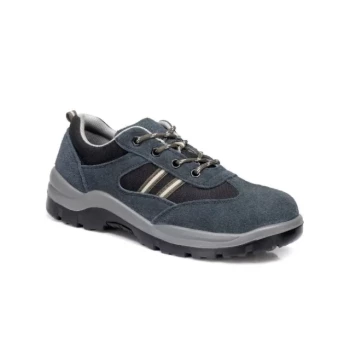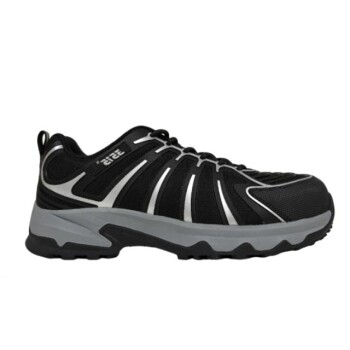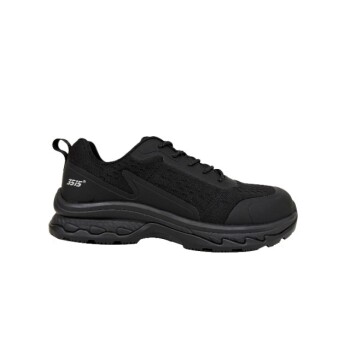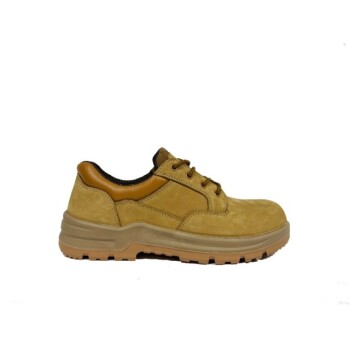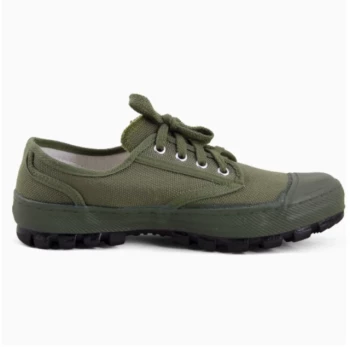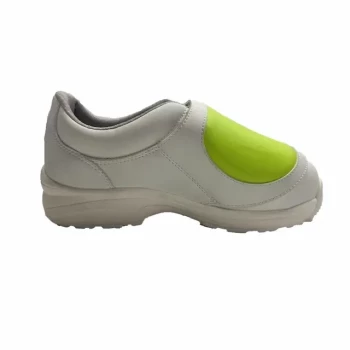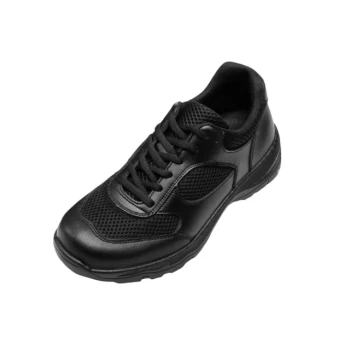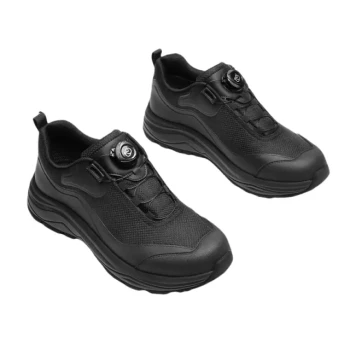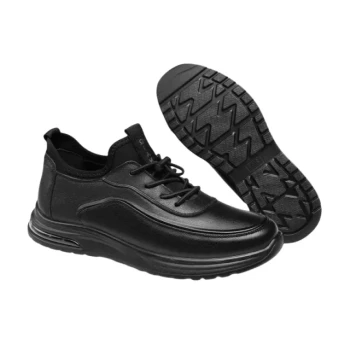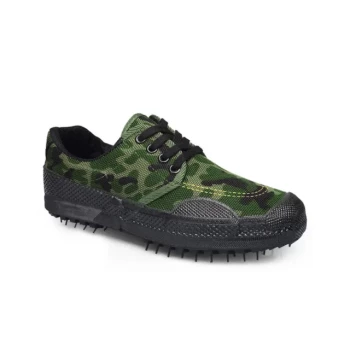In short, no. Safety shoes are not good for general or fitness walking. While they are essential for protecting your feet in hazardous environments, their design is fundamentally at odds with the biomechanical needs of a comfortable, efficient walking stride.
The core issue is one of purpose-built design. Safety shoes are engineered to prioritize protection against impact, compression, and punctures. This is achieved through rigid, heavy materials that restrict the natural flexibility of your foot, increasing physical strain and the risk of injury during extended walks.
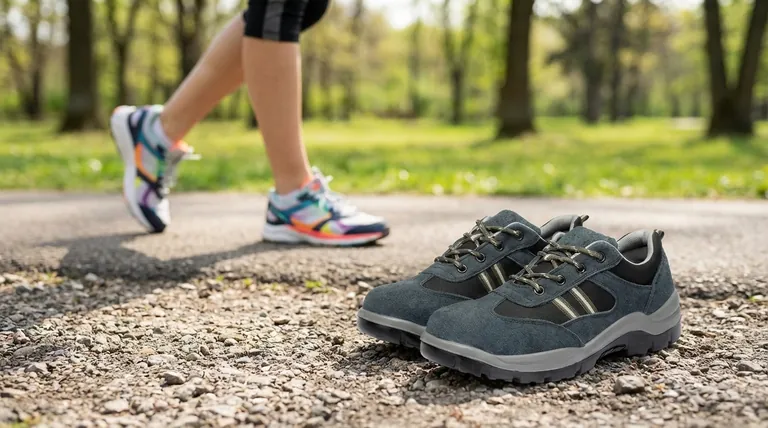
The Fundamental Design Difference: Protection vs. Performance
To understand why safety shoes are unsuitable for walking, we must first compare their core purpose to that of a dedicated walking or running shoe.
The Anatomy of a Safety Shoe
A safety shoe is a system of protective components. Features like reinforced toe caps, puncture-resistant midsoles, and heavy-duty slip-resistant outsoles are non-negotiable for workplace safety.
These elements, by their very nature, add significant weight and rigidity to the shoe's structure. Their primary goal is to create a shield for your foot.
The Biomechanics of a Walking Shoe
A good walking shoe is designed for repetitive forward motion. It prioritizes flexibility, allowing your foot to bend and roll through its natural gait cycle.
They use lightweight materials and engineered cushioning to absorb impact and reduce fatigue over thousands of steps. The entire design is centered on efficiency and comfort.
How Safety Shoes Restrict Natural Movement
The stiffness of a safety shoe works directly against your body's mechanics. It forces your ankle and lower leg muscles to work harder to propel you forward.
This restriction alters your natural stride and increases the physical demand on your musculoskeletal system, which can lead to fatigue, discomfort, and even injury over time.
Understanding the Trade-offs
Choosing to walk long distances in safety shoes involves accepting significant downsides that are not present in proper walking footwear.
Increased Physical Strain
The combination of extra weight and a rigid sole means you expend more energy with every step. This leads to faster fatigue compared to walking in a shoe designed for that activity.
Reduced Flexibility and Comfort
A healthy walking motion requires the shoe to flex near the ball of the foot. Safety shoes, especially those with steel shanks or puncture plates, are deliberately built to resist this flexion, which can feel awkward and uncomfortable.
Unnecessary Over-Protection
When walking for fitness or recreation, the heavy-duty protective features of a safety shoe are simply dead weight. You carry the burden of the protection without needing the benefit.
Choosing the Right Tool for the Job
For optimal comfort and to prevent strain, it is critical to match your footwear to your walking environment.
For Pavement and Urban Environments
Road-running shoes are an excellent choice. They are lightweight, highly cushioned, and built to handle the repetitive impact of walking on hard, even surfaces like sidewalks and asphalt.
For Parks and Mixed Terrain
Hiking shoes offer a more robust solution. They provide superior stability, durability, and traction for walking on gravel paths, cobblestones, or uneven park trails. Many are also waterproof.
For Non-Paved Trails
Trail-running shoes serve as a hybrid. They combine the lightweight feel of a running shoe with the enhanced grip and durability needed for unpaved, natural surfaces.
Making the Right Choice for Your Walk
Ultimately, the decision comes down to matching your footwear to your primary activity.
- If your primary focus is walking on sidewalks and paved paths: Choose a lightweight and flexible road-running shoe for maximum cushioning and comfort.
- If your primary focus is walking on park trails or uneven surfaces: Opt for a hiking shoe that provides superior stability, support, and traction.
- If your primary focus is workplace safety with incidental walking: Use your safety shoes as intended, but invest in a separate pair of shoes for any recreational or fitness walking.
Selecting footwear designed for its specific purpose is the most effective way to ensure your comfort, enhance your performance, and protect your long-term joint health.
Summary Table:
| Feature | Safety Shoe | Walking/Running Shoe |
|---|---|---|
| Primary Purpose | Protection from workplace hazards | Comfort and efficiency for walking |
| Weight | Heavy due to protective materials | Lightweight for reduced fatigue |
| Flexibility | Rigid to resist impact/puncture | Flexible to support natural gait |
| Best Use Case | Hazardous work environments | Fitness walking, recreation, daily use |
Need the Right Footwear for Your Specific Needs?
As a large-scale manufacturer, 3515 produces a comprehensive range of footwear for distributors, brand owners, and bulk clients. Whether you need durable safety boots for industrial workers or comfortable, performance-driven shoes for retail and everyday use, our production capabilities encompass all types of shoes and boots.
Let us provide the perfect footwear solution for your market. Contact our team today to discuss your requirements and benefit from our extensive manufacturing expertise.
Visual Guide

Related Products
- Custom Safety Shoe Manufacturer for Wholesale & OEM Brands
- Premium KPU Athletic Safety Shoes for Wholesale
- Premium Lightweight Safety Shoes for Wholesale & Bulk Orders
- Wholesale Durable Breathable Safety Boots Custom OEM Manufacturer
- Wholesale Leather Safety Boots with Customizable Protective Toe
People Also Ask
- How much weight can steel toes and composite toes handle? Both Protect Against 2,500 Pounds
- What are examples of protective footwear required in different workplaces? Ensure OSHA Compliance & Worker Safety
- How is puncture resistance evaluated in footwear soles? Balance Protection, Comfort & Safety
- What type of midsoles are used in men's work shoes to prevent foot injuries? Steel vs. Composite for Ultimate Safety
- Why do landscapers need steel-toe boots? Essential Protection for a Hazardous Job
